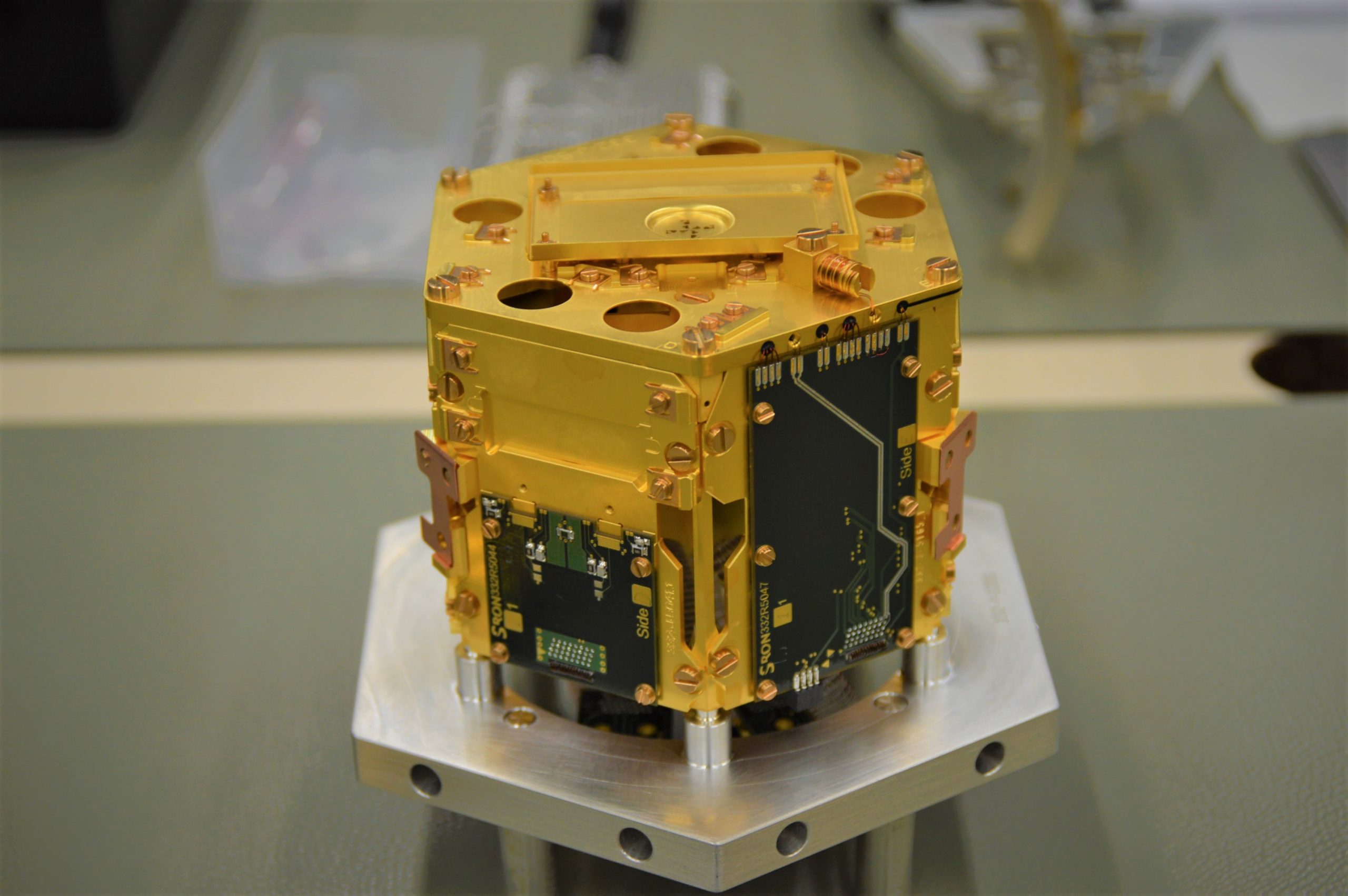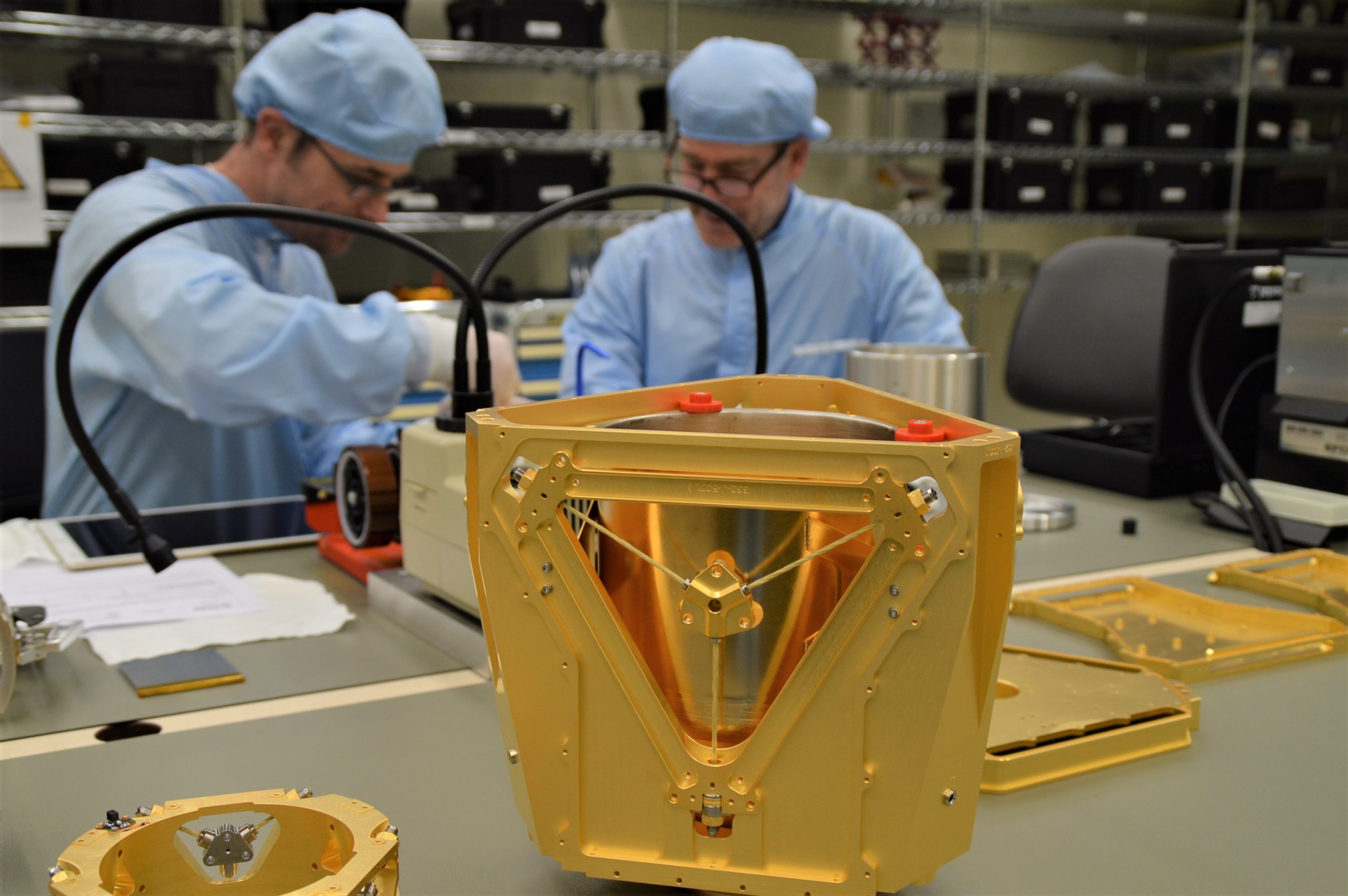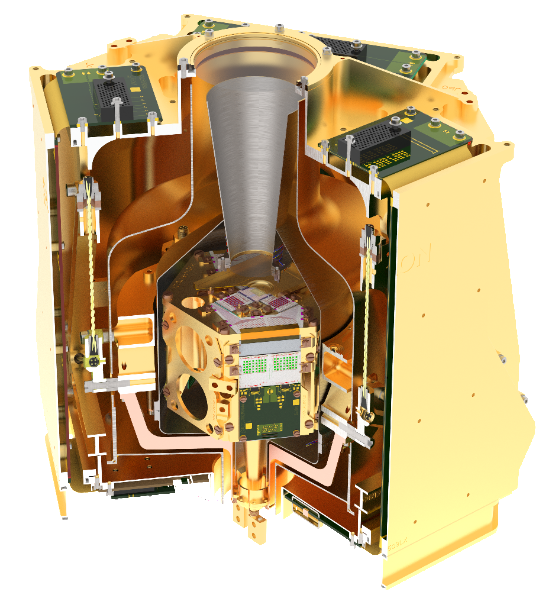(English follows Dutch)
SRON Netherlands Institute for Space Research levert een van de twee camera’s op de toekomstige Europese röntgensatelliet Athena. Daar is nu de eerste versie van in elkaar gezet in de cleanroom in Utrecht.

In 2031 lanceert de Europese ruimtevaartorganisatie ESA haar nieuwe röntgentelescoop Athena. Die wordt uitgerust met twee instrumenten: de Wide Field Imager (WFI) voor foto’s met een ruim blikveld en de X-ray Integral Field Unit (X-IFU) voor opnames met hoge spectrale resolutie. SRON levert de camera voor X-IFU, die met ruim drieduizend pixels en een spectrale resolutie van 2.5 eV voor doorbraken moet zorgen in onze kennis over superzware zwarte gaten en hete gasstructuren in het heelal.
Instrumentmakers van SRON hebben nu in hun cleanroom in Utrecht de eerste versie in elkaar gezet van X-IFU’s camera, exclusief de detectiechip. Die gaat op transport naar de Groningse afdeling van SRON, waar wordt gekeken in hoeverre het de benodigde temperatuur kan vasthouden van vijfhonderdste graad boven het absolute nulpunt (rond -273°C). Verder onderzoeken de ingenieurs hoe snel de camera haar koudste punt bereikt en waar de grootste warmtelekken zitten tussen de verschillende compartimenten. Na deze thermische tests volgt nog een vibratietest vanwege de extreme trillingen tijdens de lancering. Op basis van deze bevindingen passen de ontwerpers het concept aan voor hun tweede versie, of zoeken ze compensatie in andere onderdelen van de satelliet, zoals het vermogen van de koeling.
SRON levert de X-IFU camera, NASA de bijbehorende detectiechip. SRON maakt ook de back-up detector, op basis van supergeleidende transition-edge sensors (TES). Een belangrijk deel van de onderdelen van deze camera zijn gefabriceerd door diverse, voornamelijk Nederlandse bedrijven.
‘Het is fantastisch om nu dit eerste model te zien, waar het projectteam al zo lang en zo hard aan heeft gewerkt,’ zegt teamleider Henk van Weers. ‘Dit is de meest complexe unit die we in de afgelopen jaren ontwikkeld hebben. Complex door zijn compactheid en het grote aantal nieuwe technologieën die het team gelijktijdig heeft moeten ontwikkelen om tot dit tastbare resultaat te komen. Tot nu toe hebben we allerlei deelsystemen getest, maar dit is voor het eerst dat alles is samengebouwd tot een unit die klein en licht genoeg is om gelanceerd te worden.’


First version ready of X-ray camera for Athena satellite
SRON Netherlands Institute for Space Research provides one of two cameras for the future European X-ray satellite Athena. The first version has now been assembled in SRON’s cleanroom in Utrecht.

In 2031, the European Space Agency will launch its new Athena X-ray telescope. It is equipped with two instruments: the Wide Field Imager (WFI) for images with a wide field of view and the X-ray Integral Field Unit (X-IFU) for recordings with high spectral resolution. SRON delivers the camera for X-IFU, which aims to further our knowledge of supermassive black holes and hot gas structures in the universe, using more than three thousand pixels and a spectral resolution of 2.5 eV.
SRON instrument scientists have now assembled the first version of X-IFU’s camera in their cleanroom in Utrecht, excluding the detection chip. This will be transported to SRON’s Groningen department, where it will be tested to check whether it can maintain the required temperature of 0.05 degrees above absolute zero (around -273 °C). The engineers will also investigate how fast the camera reaches its coldest point and where the largest heat leaks reside between the various compartments. These thermal tests are followed by a vibration test, because the instrument will be subjected to extreme vibrations during launch. Based on the test results, the designers will adjust the blueprints for their second version, or look for compensation in other parts of the satellite, such as its cooling power.
SRON provides X-IFU’s camera, NASA the corresponding detection chip. SRON also makes the backup detector, based on superconducting transition-edge sensors (TES). An important part of the camera’s components are manufactured by various, mainly Dutch companies.
‘It feels great to see this first model after the project team has been working on it for so long and so hard,’ says team leader Henk van Weers. ‘This is the most complex unit that we have developed in recent years. Complex due to its compactness and the large number of new technologies we had to develop simultaneously in order to achieve this tangible result. Until now we have tested all sorts of subsystems, but this is the first time that everything has been assembled into a unit that is small and light enough to be launched.’




